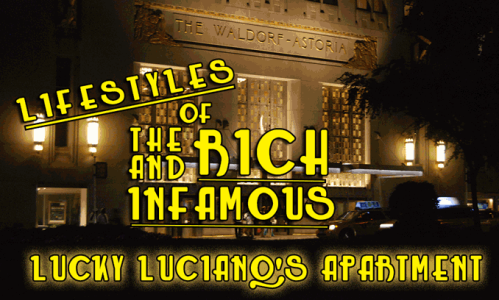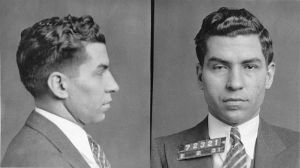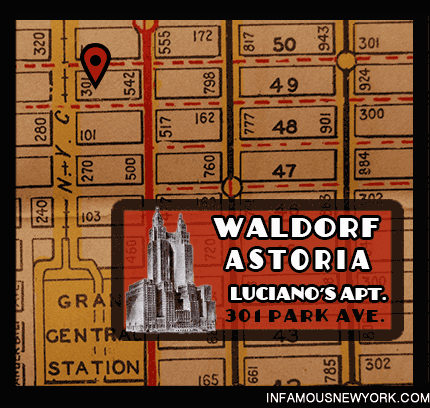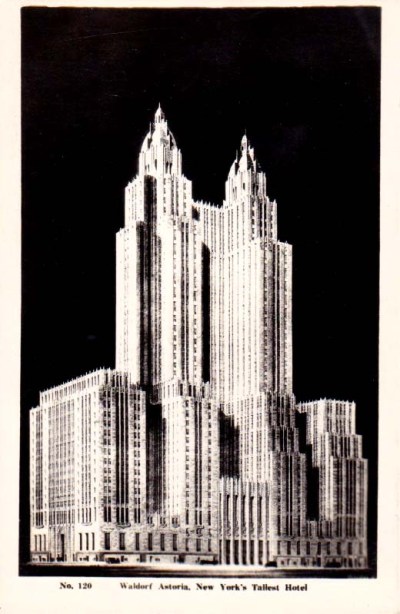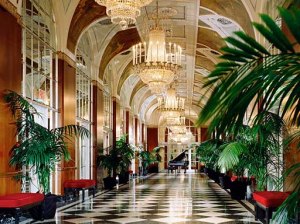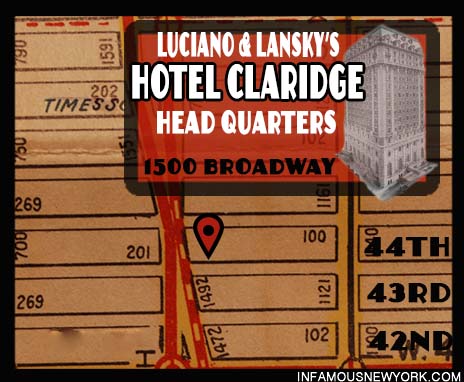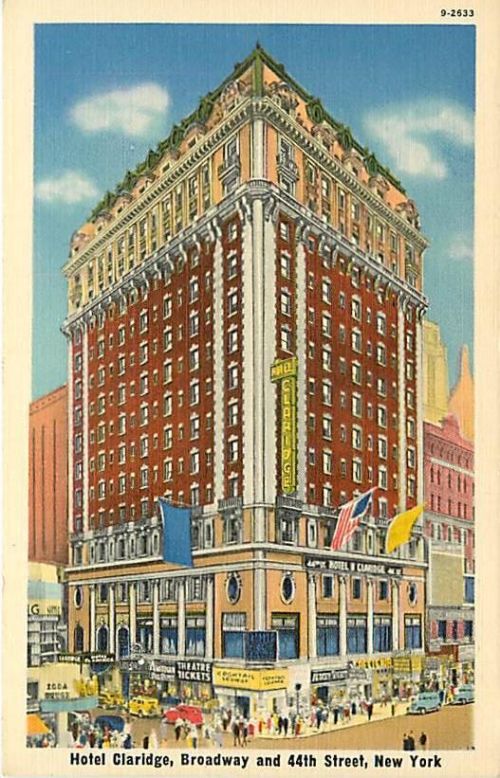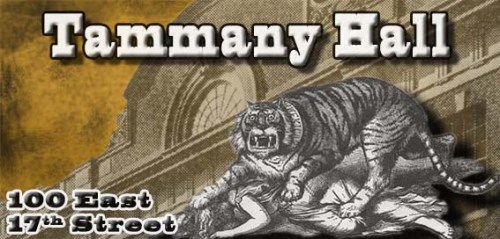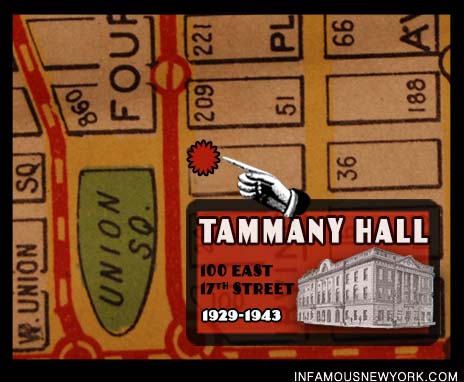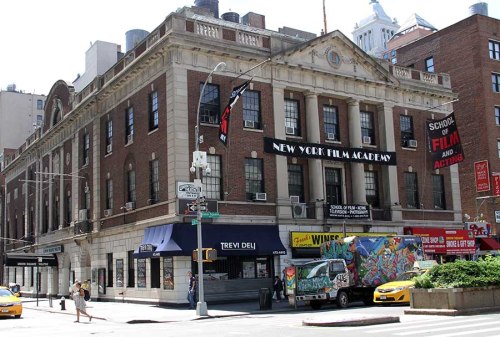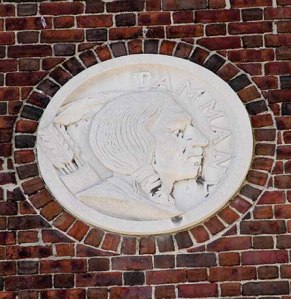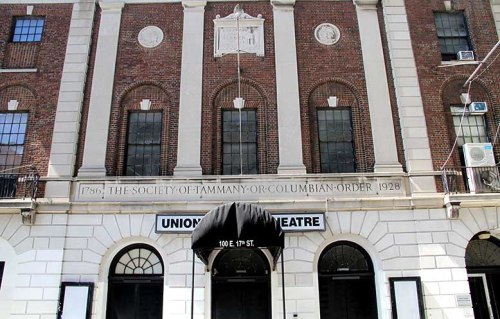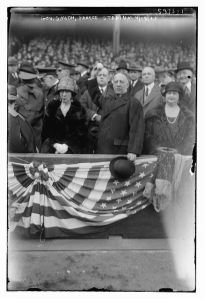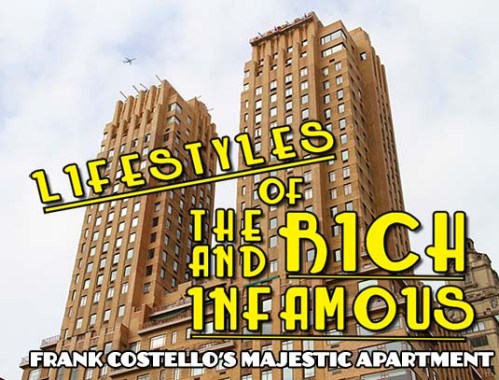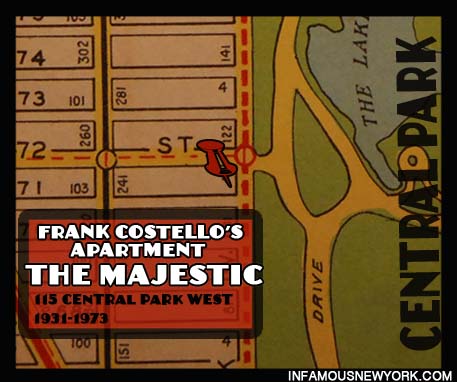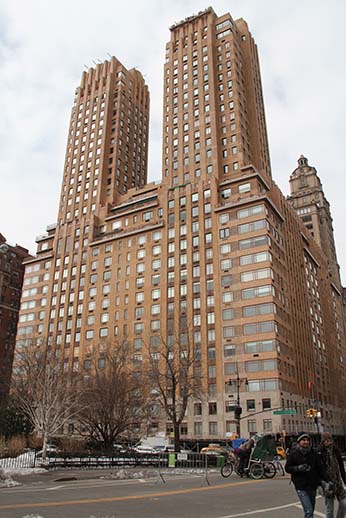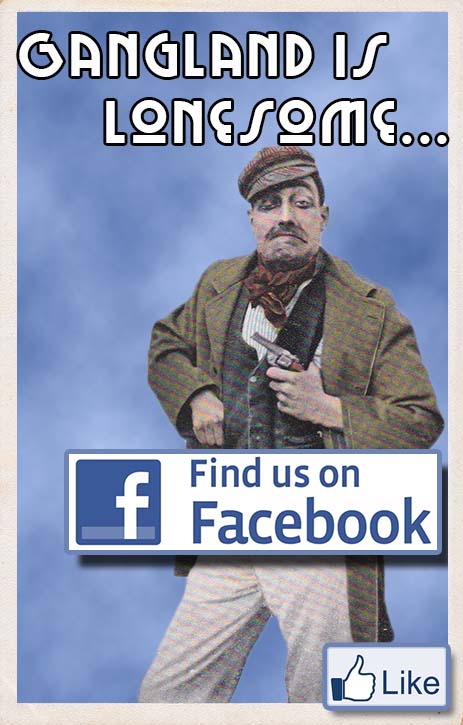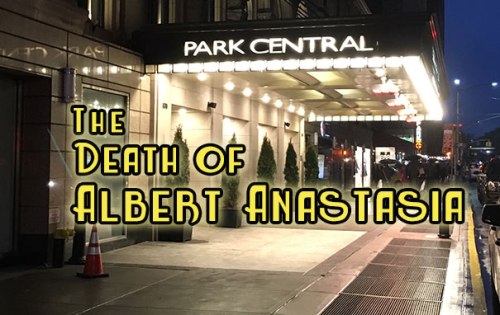
Address:870 7th Avenue
Status: Starbucks
Now a Starbucks like everything else in New York City, the old barbershop in the Park Central Sheraton Hotel may be one of the most infamous spots in Manhattan. The Park Sheraton hosted two of Manhattan’s most notorious mob hits. On November 4th, 1928, Arnold Rothstein walked into the Park Central’s front door and few hours later he spilled out of the service entrance with a bullet in his gut (click to read the Death of Arnold Rothstein). 29 years later, the Park Central would see blood again, but this time in its barbershop.
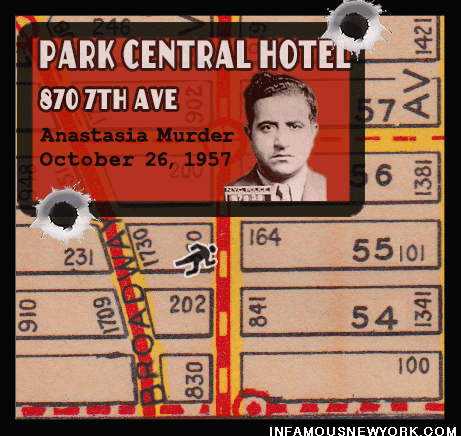
Two hitmen rubbed out Albert Anastasia in the Park Central Sheraton Hotel located at 870 7th Avenue.
Albert Anastasia’s Last Shave
At 10:30 A.M., October 25, 1957, Albert Anastasia, the highlord executioner of the mob and retired CEO of Murder Inc., strutted into Grasso’s Barber shop in The Park Sheraton Hotel with his pint sized godson and protege, Vincent Squillante. The duo plopped down into barber chairs (now in the Mob Museum) and ordered shaves and haircuts, unusual behavior considering a massive mob war had just been averted.
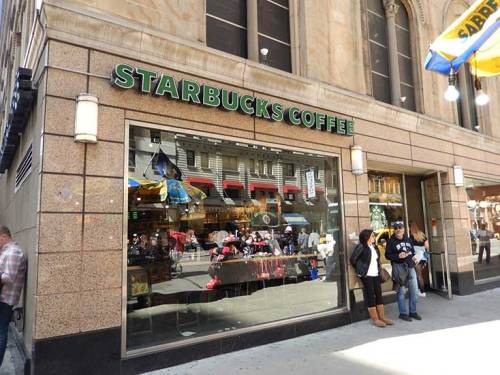
The old barbershop in the Park Central Sheraton Hotel is now a Starbucks like everything else in New York City.
Anastasia nearly went to the mattresses five months earlier by declaring war on Vito Genovese for an attempted rubout of Frank Costello (Click to read the story about Frank Costello). After threatening scorched-earth revenge, The Highlord Executioner had assurances from the Five Families that there would be no bloodshed. According to Joseph Bonanno:
“…Anastasia and Genovese met at a select dinner gathering… Albert and Vito exchanged accusations and made counter charges. They clarified and rationalized their positions. But at last, though reluctantly, they renounced going to war against each other. The rest of us raised our glasses in a toast for peace. Albert and Vito kissed each other on the cheek.” – Joseph Bonanno, Man of Honor
Now at the apex of his power, Anastasia sat back and let his barber cover his face with piping hot towels. The bad blood had coagulated and Genovese could be trusted, or so Anastasia thought. According to Bonanno, Albert finally conquered his explosive temper. He had matured, and it would cost him his life.
The Trifecta: Gambino, Genovese, Lucchese
Rather than blood feuding with Genovese, Anastasia spent the next few months expanding his empire into Cuban casinos with Santos Trafficante and built a mansion in Fort Lee., while Genovese maneuvered to overthrow the CEO of Murder Inc.
Genovese and Lucchese crept through the underworld seeking tacit approval for the death of Anastasia. They contacted Meyer Lansky and wooed Carlo Gambino, Anastasia’s underboss, to set up Anastasia’s downfall.
The Missing Bodyguard
For a man who dealt in death his entire life, Al Anastasia threw caution to the wind. Arrested for homicide six times with diverse weapons which ranged from ice picks to revolvers, Anastasia perfected the unsolvable mob hit and the “one way ride”.
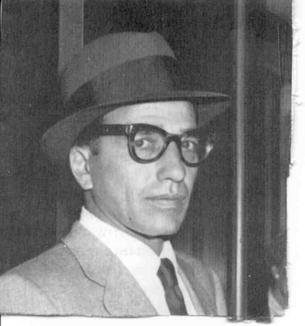
Anastasia’s protege, Vincent Squillante survived the barbershop attack.
Despite the homicidal resume, Anastasia had gotten lax. On the day of his assassination, his bodyguard and chauffeur, Anthony Copolla, was nowhere to be found. Copolla dropped Anastasia off at the barbershop, parked the Chevy in a lot and never returned. Even more unthinkable, the mobster took a barber chair with his back facing the door. A setup loomed and the new mature Anastasia missed the tell-tale signs.
The Barbershop Quintet
The attack was a classic mob hit. Two identically dressed gunmen hidden beneath aviator sunglasses, fedoras, and scarves wrapped around their faces walked into the hotel lobby. A wheelman and lookout in the lobby were waiting for them outside.
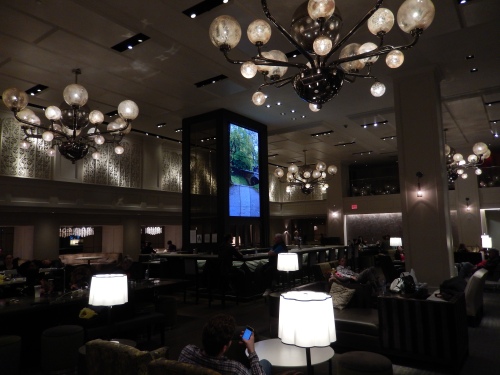
The renovated lobby of the Park Central Hotel. The door into the barbershop (now Starbucks has been removed).
Entering from the lobby, the gunmen walked around a partition which screens the shop’s chairs and walked directly to Chair No. 4, taking aim at Anastasia’s back. One hitman strode to the left of Anastasia and pushed aside the barber with the muzzle of his gun. The other killer strode to Anastasia’s right. Suddenly, they opened fire with their .32 and .38 caliber revolvers.
Five bullets tore into the mafia chieftain. Dazed, Anastasia lunged at his own reflection in the mirror before collapsing into a heap of bloody towels. The hit squad fled through the lobby sparing both the barber, and Squillante, Anastasia’s protege, who yelped, “Let me outta here!”

Albert Anastasia was gunned down in the Park Central Hotel.
Who Murdered Anastasia?
The police never apprehended the mob hitmen and the crime remains unsolved. According to New York magazine, a police informant named Sidney Slater claimed Crazy Joe Gallo bragged that the rubout was the handywork of his hit team. According to New York Magazine, Crazy Joe remarked:
“From now on Sidney… You can just call the five of us the barbershop quintet.” New York Magazine, 1972- The Mafia at War.
Unsanctioned by the Mafia Commission, the hit squad consisted of Crazy Joe Gallo, Joseph Gioielli, Carmine Persico, Albert Gallo and an unidentified co-conspirator.






